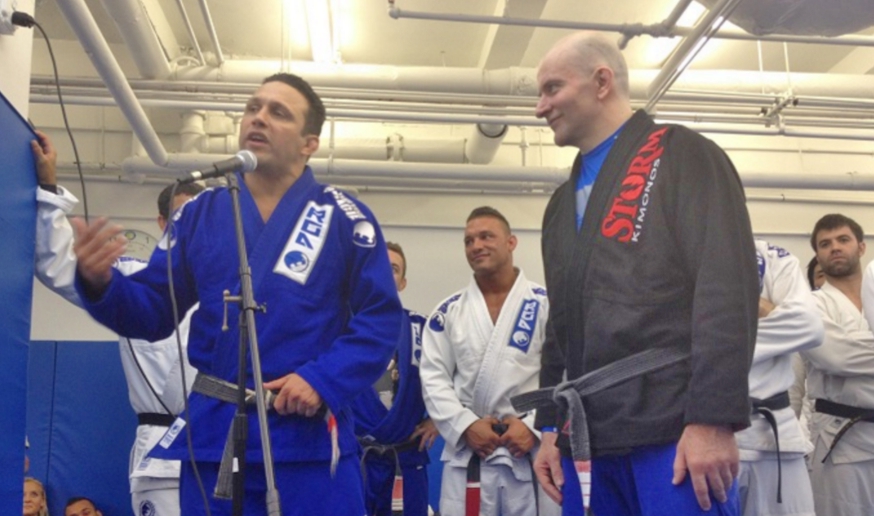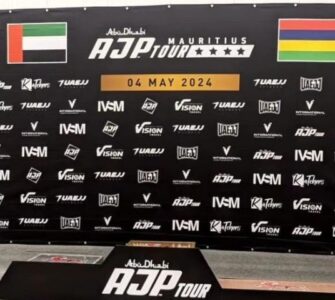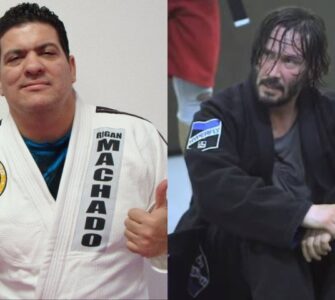John Danaher is universally known one of the best instructors in Jiu-Jitsu. The New Zealand born, BJJ black belt under Renzo Gracie has been praised by the BJJ community as being a master and brain of the art. Danaher is a highly intelligent individual, who has a Master degree in philosophy, and is totally focused on the evolution and improvement of Jiu-Jitsu. He is also the submission coach of none other than former UFC Welterweight Champion George Saint Pierre and of the mebers of the infamous Danaher Death Squad: Garry Tonon, Gordon Ryan, Nick Rodriguez etc… Danaher trains at Renzo Gracie’s Academy in New York where he also teaches Jiu jitsu.
He was recently asked a very interesting question in the BJJ Fanatics group about the BJJ belt system.
The belt system is one of the most heated debates in BJJ and it seems that there is no universal standard.
Firas Zahabi Calls Out BJJ McDojos Promoting Students Based on Attendance
&
Why Does It Take Around 10 Years To Get A Black Belt In BJJ?
Here is what Danaher was asked:
Hi John Danaher,
I recently listened to Joe Rogan’s interview with Firas Zahabi where they discussed how one of his purple belts had submitted several seasoned black belts in competition and that the two of you differed in opinion as to whether this indicated that he should be promoted to brown belt.
I wanted to ask what you feel are the requirements for a blue, purple, brown or black belt at your academy and if it is subjective or are there blanket levels you expect for each belt.
Danaher answered brilliantly:
Two things I have learned over the years in Jiu Jitsu. First, Belts do absolutely nothing to enhance the one thing we should be interested in as we study Jiu Jitsu – our performance level (we should always be striving to improve our own performance and the performance of those around us and ultimately the performance of the art itself).
Second, despite this, people probably put more obsession and concern into belt color than than they do into anything else in the sport. In truth there is only one belt that counts – black belt. Understand that if you study for a lifetime you will spend the vast majority of your training years as a black belt and look back and wonder why you ever concerned yourself with worry over how long it took to go from blue to purple belt.
Once you become an adult no one cares what grades you scored in junior high school – though when you were back in junior high school they probably seemed like a big deal to you. As an adult, people only care about your achievements as an adult. So too with belts. Black belt denotes your passage into training adulthood – nothing more. It is a symbol that you can now enter into a more serious phase of learning where you know enough to formulate your own developing approach to the game and begin to teach others. You still have a lifetime of learning and development ahead of you.
How long it takes to make each advance in belt will be determined by several factors. Age is one of them. I don’t believe in giving black belts to children as many martial arts do. I’m glad that Jiu jitsu has separate belts for children. I don’t use the same performance criteria for older athletes as I do for young healthy athletes – that would be unfair. Background is another factor. If an athlete is already very experienced and skilled from years of training in a related grappling art and thus makes very fast performance improvements, he or she is far more likely to get promoted quickly.
Well rounded technical proficiency and an ability to perform that under the stress of sparring is the number one indicator I look for. If someone is winning with just one or two moves and has gaping holes in the rest of their game – that’s a problem. If they are winning mostly due to their physical attributes – that’s a problem. Their ability to enhance the performance of the training room with their presence through a team player/harmonious attitude is another factor.
I am a traditionalist who believes MERIT (as roughly outline here) is the only criteria for a belt. I don’t give belts for time served. You don’t just show up and get a belt. That is the antithesis of everything I stand for. When you get that belt you should know in your heart you EARNED it. Belts given out because you showed up to a certain number of lesson are like inflated currency – worthless in the market. But belts given because you can perform skills that few others can at your age, size and time of training are like gold – they will hold value wherever you go.
In a world of hustlers, con men, marketers and salesmen – your belt should be something you tie up with pride and a sense of genuine accomplishment. At the end of the day – don’t give a damn about what what color your belt is – worry about what you can do on the mat. The people we all admire the most are those whose performance level exceeds the expectations of their belt, age and time of training. Make that your goal rather than the superficial concern over whether it took you twenty four months rather than twenty eight months to get a new belt color.
Train hard, train intelligently, help others do the same and improve a little every day – the one thing that counts – your performance level – will increase over time. As your peers and teachers observe your success you will win them over and change their opinion of you – that is something praiseworthy and a source of healthy pride. Focus on the deeper aspects of Jiu Jitsu and every day make yourself better than you were the day before – do that consistently and the superficial aspects of Jiu Jitsu – belt color – will take care of themselves.
So you heard it from the man. We should all be more concerned about progressing in Jiu-Jitsu and not with the color of our belt.



















